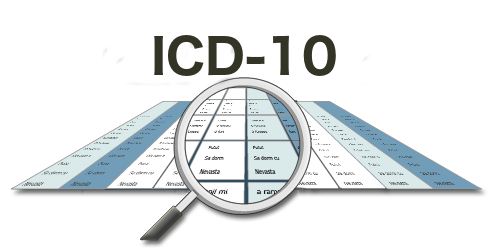After a potentially-long night completing a polysomnography—known more commonly as a sleep study, which has been performed for decades to diagnose and evaluate the severity of sleep apnea—the last thing you want to do is comb through a bunch of numbers to try to decipher your sleep apnea test results.
While you may be eager to review your sleep apnea test results, looking through the data may not be as informative if you don’t know how to interpret your sleep apnea results. Until you can speak directly with your primary care physician about what your sleep apnea test results indicate, this handy guide can help provide a basic understanding of sleep apnea and your overnight sleeping habits.
There’s quite a bit of data in the report, and if you want to read and understand your sleep apnea test results, it’s helpful to know these four things. You will want to discuss the results in-depth with your doctor at your next appointment, though, so they can interpret the information and provide tailored recommendations. Having sleep apnea test results questions is normal, and your primary care physician or sleep health doctor can guide you through your concerns.
Your Apnea Hypopnea Index (AHI)
The apnea hypopnea index (AHI) is the number of apneas or hypopneas—or, respiratory events that create a significant decrease in airflow—recorded per hour of sleep during the sleep study.
The severity of sleep apnea is determined by the AHI and is classified in this AHI sleep apnea chart by AHI type and AHI rating:
Normal AHI < 5 per hour
Mild AHI ≥ 5, but < 15 per hour
Moderate AHI ≥ 15, but < 30 per hour
Severe AHI ≥ 30 per hour
While these numbers indicate if sleep apnea is present, your primary care physician or sleep health doctor will officially diagnose you and provide you with the next steps.
Types of Sleep Disruptions
While apneas, which occur when you stop breathing for at least ten seconds, are typically the most common characteristic of sleep apnea, there are other types of sleep disruptions that will be charted during your sleep study. A hypopnea, a partial cessation of airflow, can be just as serious as an apnea, or you may have a respiratory effort-related arousal (RERA) that can disrupt the depth of your sleep without qualifying as an apnea or hypopnea. The sleep study should note other arousals or partial awakenings or excessive movements, which will help your doctor assess your sleep quality and select the most appropriate treatment option.
Sleep disruptions create significant short-term and long-term health consequences ranging from mild stress to serious cardiovascular and metabolic issues, so the quality of your sleep is very important.
Your Sleep Stages
You’ve probably heard of rapid eye movement (REM) sleep, but there are several stages you progress through during the night: N1, N2, N3, and REM sleep. Adults cycle through these stages (in that order) several times each night, but sleep apnea and other sleep disorders can fragment the cycle which prevents the revitalizing rest adults need for their short-term and long-term health.
Unfortunately, sleep apnea can prevent adults from ever entering REM sleep, the deepest stage of sleep. REM sleep loss is associated with memory issues, an increased risk of obesity, an increased risk of inflammatory responses, and an increased risk for depression, diabetes, and even cardiovascular disease. And, bewilderingly, sleep apnea can be worse during REM sleep for some people; one study showed half of the patients in a sleep apnea study experienced a significant increase in AHI during REM sleep.
Throughout the polysomnography, monitors will keep track of your sleep stage as you experience it, allowing the sleep study technicians to observe any irregularities.
Another factor that is important to observe is your primary sleep position, especially since studies have shown that AHI increases while people with sleep apnea sleep on their backs. The sleep study will observe and record how much of your sleep time was spent supine (on your back) prone (on your stomach), and on your left and right sides.
Your Oxygen Desaturation (SaO2) Levels
Your sleep study results will also include your oxygen desaturation (SaO2) levels, which are reductions in blood oxygen. When you stop breathing repeatedly during sleep, you’re not getting the amount of oxygen needed in your bloodstream.
A normal blood oxygen level is 96% to 97%, while moderate oxygen desaturation ranges between 80% to 89 percent. Oxygen desaturation levels below 80% are considered severe. In people with severe sleep apnea, oxygen levels can fall as low as 60%, meaning they are only absorbing just over half the oxygen needed to function.
This can cause serious cardiovascular problems and other health issues, but by using a CPAP (continuous positive airway pressure) device, airflow will be restored and oxygen levels will be stabilized which can help you—finally—enjoy quality sleep.
After the sleep study, your interpreting physician will examine the findings and make a recommendation based on your sleep apnea test results. Recommendations can include:
Returning for a CPAP titration
Having an in-center sleep study or titration done if you originally did a home sleep test
Scheduling a CPAP set-up to get the equipment you need
If you or your partner suspect that you have sleep apnea, it’s critical to have a sleep study done as soon as possible since untreated sleep-disordered breathing can lead to life-threatening cardiovascular, neurocognitive, and metabolic complications. There are pros and cons to having a sleep study performed in a sleep lab, and home sleep tests are growing in popularity. (Read this helpful guide if you determine a home sleep test is best for you.)
